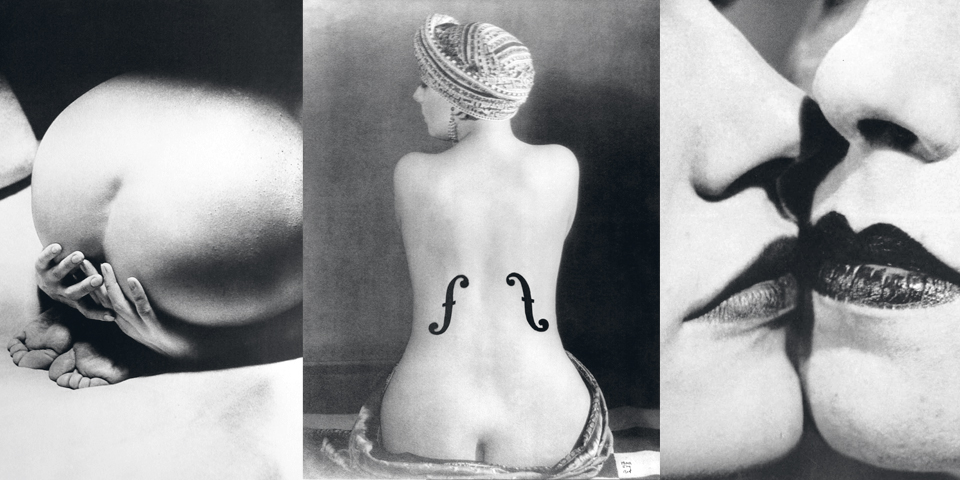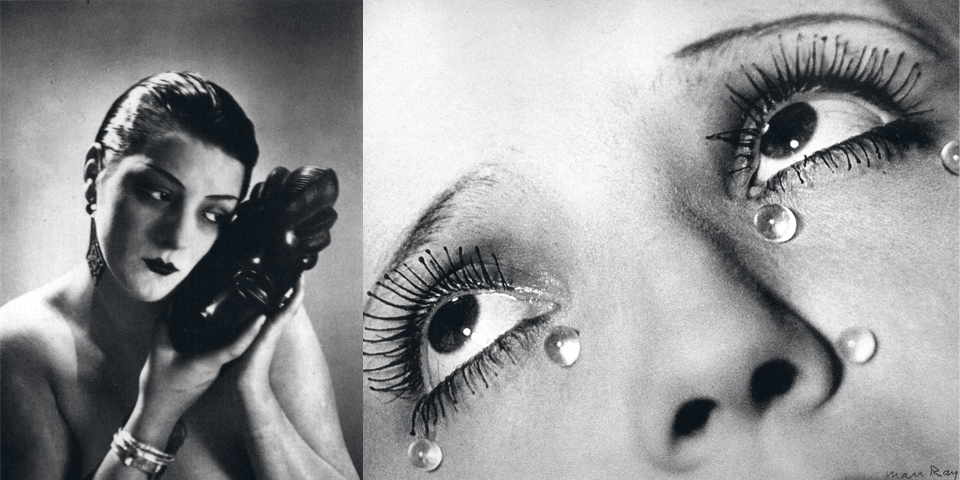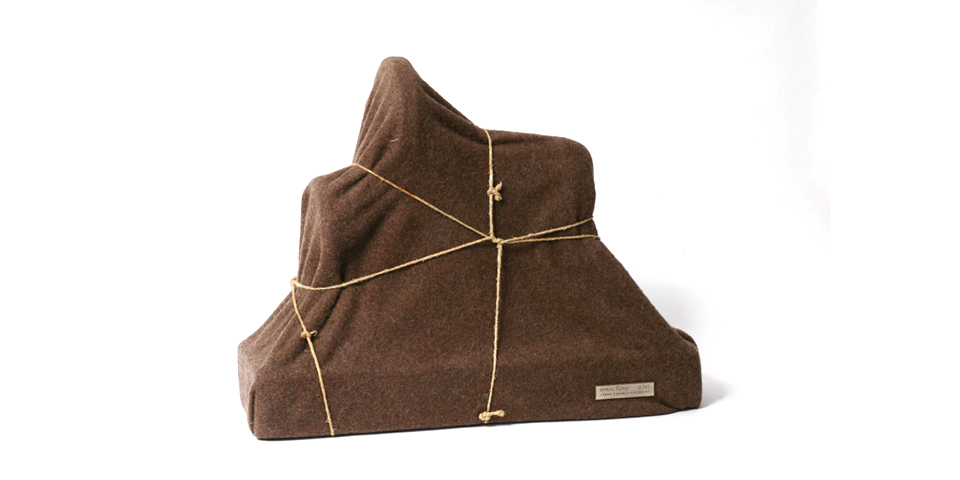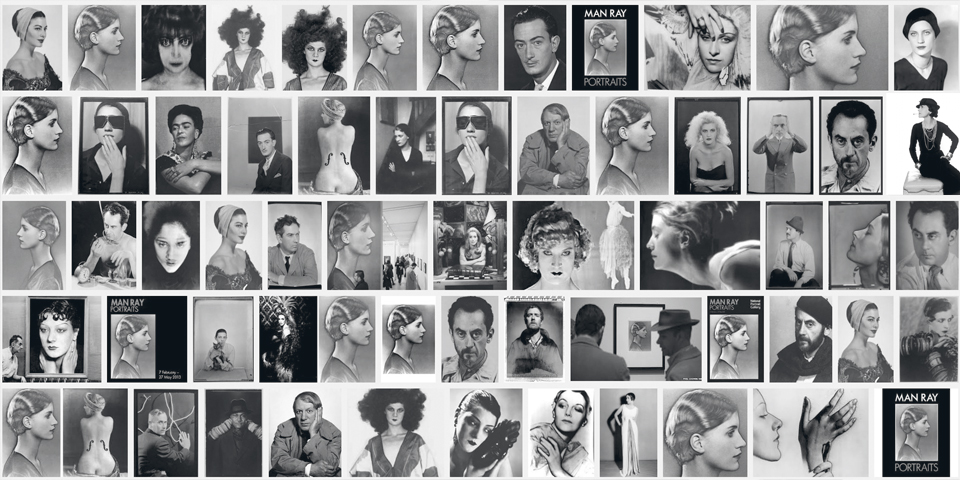IT’S ABOUT ART, MUSIC & LITERATURE
MAN RAY
PAINTER, PHOTOGRAPHER & FILMMAKER
Legendary Photography, painter, and maker of objects and films, Man Ray was on the most versatile and inventive artists of twentieth–century. Born in Philadelphia in 1890, he knew the worlds of Greenwich Village in the avant garde era following the 1913 Armory show, Paris in the 1920’s and 1930’s, where he played a key role in the Dada and Surrealist movements, The Hollywood of the 1940s, where he joined others chased by war from their homes in Europe, and finally, Paris again until his death in 1976.
Liberty and Pleasure
“All critics should be assassinated.”
Le Retour A La Raison 1923
Leave Me Alone 1926
L’Étoile de mer 1928
Interview 1972
Man Ray brought up in New York, and he adopted the pseudonym Man Ray as early as 1909. He was one of the leading spirits of Dada and Surrealism and the only American artist to play a prominent role in the launching of those two influential movements. Throughout the 1910s he was involved with avant–garde activities that prefigured the Dada movement. After attending drawing classes supervised by Robert Henri and George Bellows at the Francisco Ferrer Social Center, or Modern School, he lived for a time in the art colony of Ridgefield, NJ, where he designed, illustrated and produced several small press pamphlets, such as the Ridgefield Gazook, published in 1915, and A Book of Diverse Writings.
Ray was a frequent visitor to Alfred Stieglitz’s influential gallery, 291, where he was introduced not only to a dizzying array of European contemporary art, from Auguste Rodin’s drawings to collages by Braque and Picasso, but also to photographs by Stieglitz and others. Like many American artists, he was also greatly influenced by the avant–garde art exhibited at the Armory show. He pursued his interest in the flatness of modern abstraction in a series of paintings and collages that culminated in his masterpiece from this period, the Ropedancer Accompanies herself with her Shadows [1916, New York, MOMA]. Inspired by a performance of a circus tight–rope walker, he composed the painting by arranging large pieces of coloured paper on the canvas. Once painted, the flat, brilliantly hued “shadows” created a powerful overall design.
Demonstrating a flair for diplomacy, which later served him well among the Surrealists, Man Ray was one of the few artists to be admitted to both of New York’s avant–garde circles. He attended Walter Arensberg’s Salon and, at Marcel Duchamp’s invitation, also became a founder–member, with patron Katherine Dreier, of the Société Anonyme, one of the first organizations to promote and collect avant–garde art. In 1921 Man Ray collaborated with Duchamp on New York Dada, one of the first official chronicles of the movement.
Why? Who cares? Who doesn’t care?
Dada is dead. Or is Dada still alive. We cannot revive something that is alive just as we cannot revive anything that is dead.
Is Dada dead?
Is Dada alive?
Dada is.
Dadasim.
[Man Ray 1958]
By 1921 Man Ray was eager to experience his European influences first–hand. A timely sale of paintings to the industrialist Ferdinand Howald provided him with the funds for a trip to Paris. Unlike many American artists who spent only a short time in Paris, Man Ray made it his home for 20 years, while remaining firm about his identity as an American. There he was an influential member of the international Dada and Surrealist circles of artists and writers, which included Tristan Tzara, Jean Cocteau, Max Ernst, Dalí,Paul Eluard, Picasso and André Breton. Free to experiment, he produced works in a variety of styles and in many different media, in 1922 he began to exploit his personal variant of the photogram, which he called the ’rayograph’, a method of producing images directly from objects on photo–sensitive paper. His rayographs were usually made with recognizable objects combined in an apparently casual and arbitrary way. A group of such images was published in 1922 with the title Les Champs délicieux, with an introduction by Tristan Tzara. Tzara and other colleagues from this late Dada milieu, which prefigured the Surrealist movement, appreciated the transformation of ordinary objects into mysterious images. Man Ray himself equated his technique with painting, stating in letters that he was painting with light. Although he continued to paint and make objects such as Emak Bakia [cello fingerboard and scroll with grey hair, 1926, untraced, replica 1962, New York, MOMA] throughout his career, it was as a photographer that he made his greatest impact on twentieth–century art.
The more commercial aspects of Man Ray’s photography provided him with a steady income. Famous as a portrait photographer, in the 1920s and 1930s he was also one of the foremost fashion photographers for magazines such as Harper’s Bazaar, Vu and Vogue. Begininning in the late 1920s he experimented with the Sabattier, or solarization process, a technique that won him critical esteem, especially from the Surrealists. Many of the central figures of Surrealism — Breton, Magritte, Dalí— followed his example in using photography in addition to other media. Other photographers, such as Maurice Tabard and Raoul Ubac, were directly inspired by Man Ray’s techniques, while photographers such as André Kertész and Brassai were indirectly influenced by his innovative approach to the medium.
He also made substantial contributions to avant–garde film. In his earliest incursion into film, Le Retour à la raison, made in 1923 for the Dada soirée du Coeur à Barbe, Man Ray created the first cine–rayographs, sequences of cameraless photographic images. Later films, Emak Bakia [1926], L’Etoile de mer [1928] and Les Mystères du Château de Dé [1929], have become classics of the Surrealist genre, along with films by Luis Buñuel, Dalí and Hans Richter.
Man Ray left Paris at the onset of World War II and spent the war years in Los Angeles, where he concentrated on painting and making objects. There and on his return in 1951 to Paris, where he lived for the rest of his life, he continued to pursue the many strands of his art that had already marked him as one of the century’s most innovative artists.


















